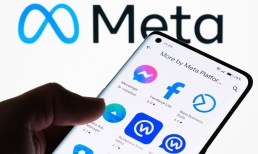Pay Later Solutions Become Lifeline for 1 in 10 Cash-Strapped Consumers

Consumers facing cash flow shortages are more likely to use pay later services compared to their financially stable counterparts, highlighting a divide in payment preferences driven by economic circumstances.
PYMNTS Intelligence’s “How People Pay Report: Cash Flow Shortages Drive Consumers’ BNPL Usage” found that buy now, pay later (BNPL) plans are increasingly serving as tools for individuals with limited access to traditional credit, enabling them to bridge financial gaps and cover everyday necessities.
The report drew on insights gathered from a survey of 2,211 U.S. consumers conducted between Oct.7 and 24. It explored the payment behaviors of financially strained individuals, revealing that while credit remains a prominent payment method, its role shifts for those struggling with cash shortfalls, often becoming a matter of necessity rather than convenience.
This reliance on alternative financing options like BNPL is underscored by the challenges many cash-short consumers face in accessing conventional credit products due to factors such as poor or no credit history and high costs.
The study found that cash flow shortages are a common experience, affecting more than one-third of survey respondents. These challenges are particularly prevalent among certain demographic groups, including millennials, low-income households, and those living paycheck to paycheck. For these consumers, BNPL offers a flexible alternative to traditional credit, allowing them to split payments into manageable installments with lower barriers to entry compared to conventional lending options.
The data indicated that the accessibility of BNPL makes it a crucial resource for managing financial demands when traditional credit restrictions pose hurdles.
Key findings from the report underscore the differential adoption of BNPL and credit based on financial stability:
- Among consumers who frequently experience cash flow shortages, 8.9% reported using BNPL in the past 30 days. This figure is more than three times the 2.5% usage rate reported by consumers without such financial challenges during the same period. Overall, cash flow compromised consumers were 3.5 times more likely to use BNPL to make purchases.
- Consumers facing cash flow shortages are more than twice as likely to use credit out of necessity. Specifically, 38% of consumers frequently encountering cash flow shortages reported using credit out of necessity, compared to 14% of financially stable individuals.
- Millennials are among the most impacted groups facing frequent cash shortfalls, with 17% reporting this experience. Among baby boomers and seniors, on the other hand, 6.6% reported frequent financial strain. Income also plays a role, as 18% of consumers earning less than $50,000 annually reported frequent shortages, compared to 9.9% of those earning over $100,000.
The report also touched upon the broader landscape of consumer payment behavior and financial vulnerability. It highlighted that financially struggling consumers may also be more likely to face payment declines and explored how budget-minded consumers often opt for debit cards and cash. Furthermore, it noted that paycheck-to-paycheck consumers continue to grapple with high interest rates and observed distinct patterns in debit versus credit use for in-store versus online shopping.



